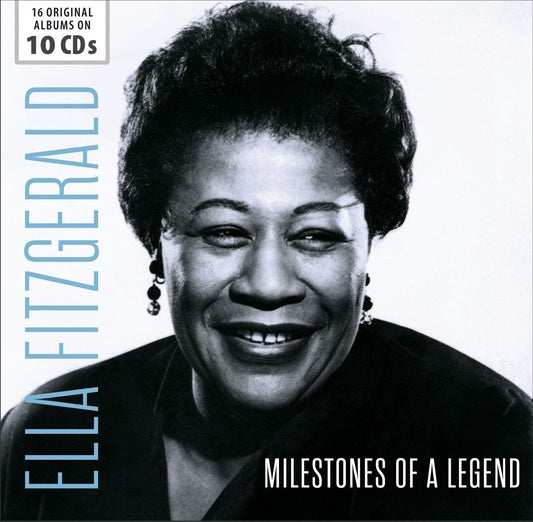CHALLENGE
Vinum et Musica - Songs & dances from Nuremberg sources (15th & 16th century) - Capella de la Torre, Dominique Visse
Vinum et Musica - Songs & dances from Nuremberg sources (15th & 16th century) - Capella de la Torre, Dominique Visse
FORMAT (CD, LP, DVD?)
FORMAT (CD, LP, DVD?)
Couldn't load pickup availability

Five hundred years ago no one would have had to argue long about the image and significance of Nuremberg. The city was the intersection of numerous trade routes, housed the imperial regalia, was the germ cell of German humanism. A musical tour through what was then the centre of Europe –Dominique Visse and the Capella della Torre are embarking on no less a venture on this CD. They takes us back to an epoch around 1500, a date always regarded as the heyday of the free imperial city. A guided tour might have started then (as now) up at the Kaiserburg, Nuremberg Castle, the emblem of Nuremberg. Actually a relic of the Early Middle Ages, the castle was still used for military purposes until the Thirty Years War. Probably there were quite a few mercenaries in it humming the song L’homme armé, one of the most popular melodies ever of early modern times, heard here in what is possibly the earliest version by Robert Morton. It warns of the “armed man” and calls on men to don their armour. At the same time, Nuremberg Castle was also residence until 1571 of all kings and emperors of the Holy Roman Empire when they stopped on their itineraries in “Noris” (an allegorical name for the city and its region). The state motet printed in Nuremberg Fortitudo Dei regnantis in praise of the Polish king Sigismund I was composed to mark this.
The musical tour goes on down from the castle to the spacious Marktplatz and further, Visse and his Capella della Torre take the listener by the hand...
The ensemble of the Capella de la Torre corresponds more or less exactly to that of the Nuremberg town pipers of the era: shawm, bombard and bass, augmented with trombone and cornett (zink). Documented for the first time in 1384, the town pipers played at church services, municipal council sessions, at weddings and carnival processions and became so famous that in the sixteenth century they represented Worms and Bamberg as well as Nuremberg at the annual ratification of the tariff and customs privileges in Frankfurt.

01. Fanfare 01:42
02. L'Homme armé à 4 01:17
03. Fortitudo Dei regnantis à 6 03:17
04. Basse Danse Aliot Nouvelle 03:13
05. Hymnus in vitam S. Sebaldi à 3 03:01
06. Kaddish à 5 06:25
07. Benedicite Almechtiger Gott 02:18
08. Ave Maria a 6 05:54
09. Tanz/Nachtanz à 5 02:23
10. Se la face ay pale à 3 03:29
11. Se la phase pale 02:06
12. Ich spring an diesem Ringe 03:15
13. Salve Regina prima pars 06:28
14. So trinken wir alle à 5 02:07
15. Passamezzo 04:13
16. Dulces exuviae 04:46
17. Exegi monumentum aere perennius 06:23
18. Fortuna - nasci, pati, mori 02:14
19. Vecchie Letrose 02:25


GREAT SAVINGS on OUR 10 CD SETS
-
BACH: 800 YEARS OF THE ST. THOMAS CHOIR, Leipzig - MOTETS, CANTATAS, PASSIONS (8 CDS)
Regular price $10.99 USDRegular price$24.99 USDSale price $10.99 USDSale -
BACH: Vocal Works (10 CD SET INCLUDES FREE BACH CANTATAS DOWNLOAD)
Regular price $14.99 USDRegular price$24.99 USDSale price $14.99 USDSale -
BALLROOM DANCEHALL - GLENN MILLER, ARTIE SHAW, CAB CALLOWAY, WOODY HERMAN AND MORE (10 CDS)
Regular price $17.99 USDRegular price$24.99 USDSale price $17.99 USDSale -
BEETHOVEN: SONATAS & VARIATIONS - WILLIAM BACKHAUS (10 CDS)
Regular price $21.99 USDRegular price$39.99 USDSale price $21.99 USDSale -
BEETHOVEN: THE 9 SYMPHONIES - KARAJAN, BERLIN PHILHARMONIC (6 CDS)
Regular price $19.99 USDRegular price$29.99 USDSale price $19.99 USDSale -
BERT KAEMPFERT: 10 CLASSIC ALBUMS & BONUS TRACKS (10 CDS)
Regular price $24.99 USDRegular price$29.99 USDSale price $24.99 USDSale -
CHARLIE PARKER - 22 Original Albums - Milestones of a Legend (10 CDS)
Regular price $24.99 USDRegular price$29.99 USDSale price $24.99 USDSale -
Chet Baker: Milestones of a Legend (10 CDs)
Regular price $24.99 USDRegular price$29.99 USDSale price $24.99 USDSale -
CHRISTMAS WITH THE STARS (10 CDS)
Regular price $9.99 USDRegular price$24.99 USDSale price $9.99 USDSale -
DMITRI MITROPOULOS - MAESTRO (10 CDS)
Regular price $5.99 USDRegular price$24.99 USDSale price $5.99 USDSale -
Ella Fitzgerald Sings The Songbooks (Cole Porter, George & Ira Gershwin, Rodgers & Hart, Irving Berlin - 10 CDs)
Regular price $21.99 USDRegular price$29.99 USDSale price $21.99 USDSale -
Ella Fitzgerald: Milestones of a Legend (10 CDs)
Regular price $22.99 USDRegular price$29.99 USDSale price $22.99 USDSale -
ELVIS PRESLEY: MILESTONES OF A LEGEND (10 CDS)
Regular price $18.99 USDRegular price$29.99 USDSale price $18.99 USDSale -
EUGEN JOCHUM: THE LEGENDARY EARLY RECORDINGS (10 CDS)
Regular price $9.99 USDRegular price$29.99 USDSale price $9.99 USDSale -
EUGENE ORMANDY: A PORTRAIT (10 CDS)
Regular price $8.99 USDRegular price$24.99 USDSale price $8.99 USDSale -
FRENCH PIANO IMPRESSIONS (DEBUSSY; FAURE; RAVEL) - STOTT, TIRIMO, DICKINSON (4 CDS)
Regular price $9.99 USDRegular price$24.99 USDSale price $9.99 USDSale -
IRISH CELTIC (10 CDS + 1 CD-ROM)
Regular price $9.99 USDRegular price$24.99 USDSale price $9.99 USDSale -
JASCHA HEIFETZ: MILESTONES OF A VIOLIN LEGEND - VIOLIN CONCERTOS AND CHAMBER MUSIC (10 CDS)
Regular price $21.99 USDRegular price$39.99 USDSale price $21.99 USDSale -
Jazz Piano: The Ultimate Collection, Vol. 1 (10 CDs)
Regular price $19.99 USDRegular price$39.99 USDSale price $19.99 USDSale -
JOHN COLTRANE: GIANT STEPS - THE BEST OF THE EARLY YEARS (10 CDS)
Regular price $22.99 USDRegular price$39.99 USDSale price $22.99 USDSale






















